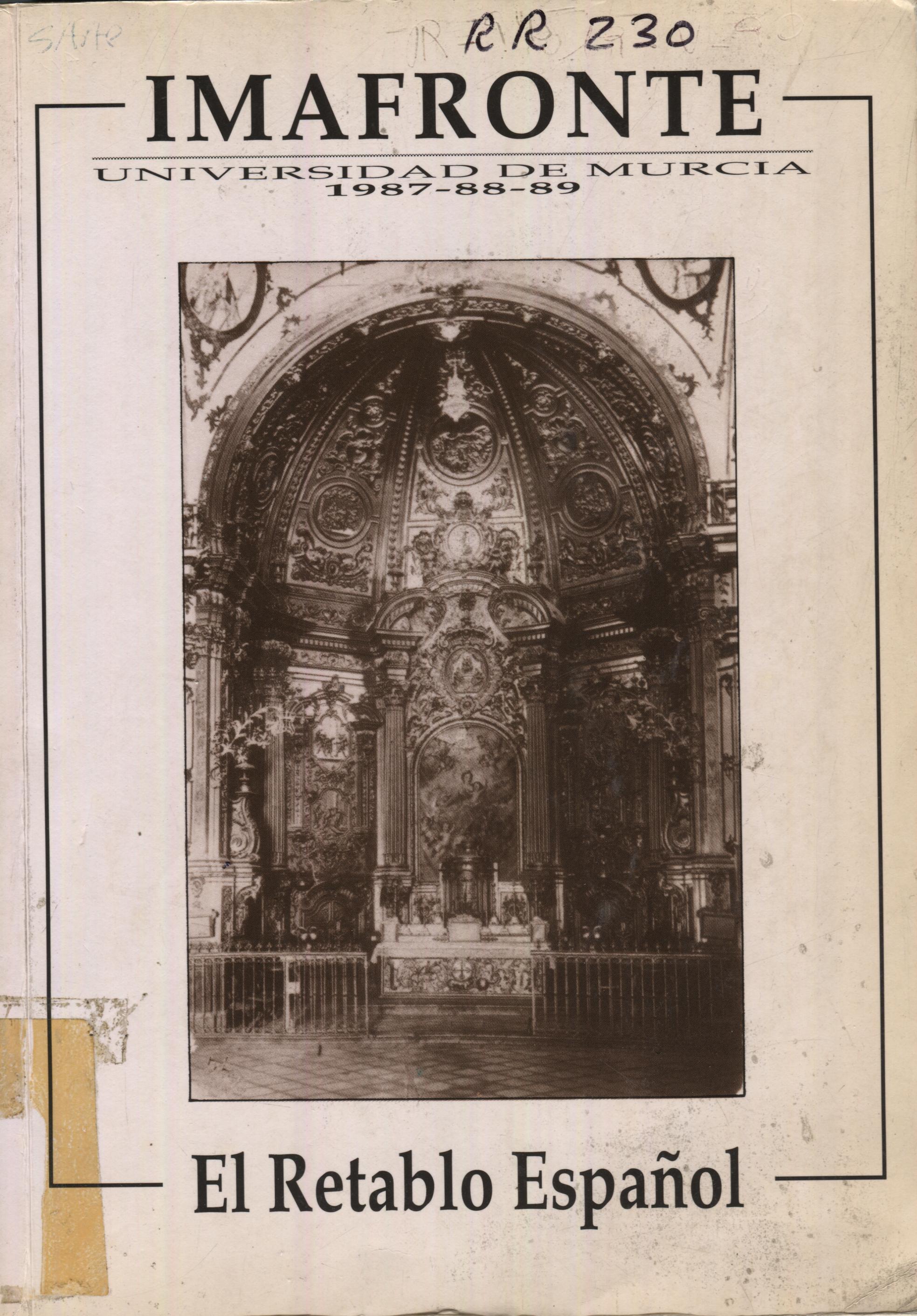EL RETABLO DE LA CAPILLA DEL ROSARIO DE LORCA, OBRA DE JOSÉ DE GANGA
Resumen
The city of Lorca, a nearly exceptional exponent of Baroque in the acient Kingdom of Murcia during the XVIIth and XVIIIth centuries, owes to its privileged geographical location. and also to particular conditions suggested by raising social sectors, the creation of certain monumental works, whitout precedents or coexistence of other similar cases inside the mentioned area and time. A very special example is the reredos in the Rosary's Chapel. built in 1748 by José de Ganga Ripoll. This native of Orihuela culminated the architectural development of this Chapel. impeled by the acme of the homonymous Brotherhood to take the fúnctions and status off proper church. The mentioned master, with in previous rich artistic trajectory, brings Italian schemes in the architectural and composiuoniil execution of the Rosary's reredos; in sutn, that one projected by the Jesuit Atidrra Pozzo. around 1699, to transfot-m the apsis in the Roman church of St. Ignatius. The luxuriant combination and typology of decorative elements resemble better the tendencies in the French rococo oscribed to Le Pautre and Meissonier. Once it is demonstrated that Father Pozzo's work were known in the south-eastern zone of Spain before the middle of the XVIIIth century, it seems credible thut iis particular diffuusion is owed to the architect Jaime Bort, builder of the main facade of Murcia cathedral, voyager and connoisser of tendencies and styles. The influence that José de Ganga received from this architect before carrying out his work at the Rosary's retable is documentally verified and hints at the hypothesis that Bort could he the way through which the retable-muker of Orihuela became familiar to Pozzo's style. The accommodation of this style to the mentioned reredos constitutes an unicum in the ancient Kingdom of Murcia in that period. At present, only the shell of the vault remains from the Rosary's retable of Lorca, since the rest was destroyed in 1936. The whole can be seen only in old photos.Descargas
-
Resumen276
-
PDF121
Las obras que se publican en esta revista están sujetas a los siguientes términos:
1. Los autores ceden de forma no exclusiva a la revista los derechos de explotación (reproducción, distribución, comunicación y transformación).
2. Las obras que se publican en esta revista están sujetas a la licencia Attribution-ShareAlike 4.0 International (CC By SA 4.0). Por lo que se pueden copiar, usar, difundir, transmitir y exponer públicamente, siempre que:
i) se cite la autoría y la fuente original de su publicación (revista, editorial y URL de la obra), permitiendo así su reconocimiento.
ii) se permite remezclar, transfromar o crear a partir del material mientras se mantenga la misma licencia del original.
3. Condiciones de auto-archivo. Se permite y se anima a los autores a difundir electrónicamente las versiones pre-print (versión antes de ser evaluada) y/o post-print (versión evaluada y aceptada para su publicación) de sus obras antes de su publicación, ya que favorece su circulación y difusión más temprana y con ello un posible aumento en su citación y alcance entre la comunidad académica. Color RoMEO: verde.
























